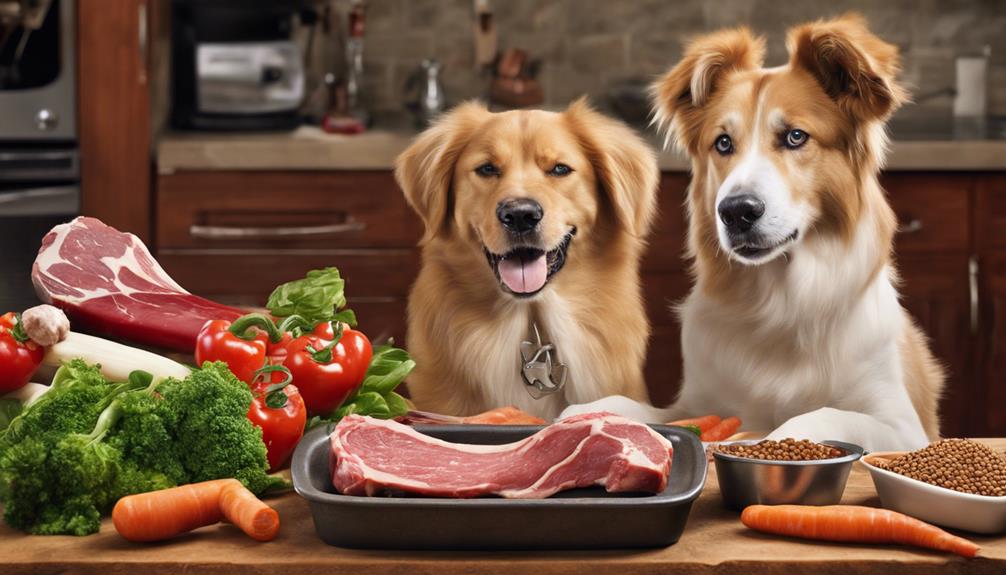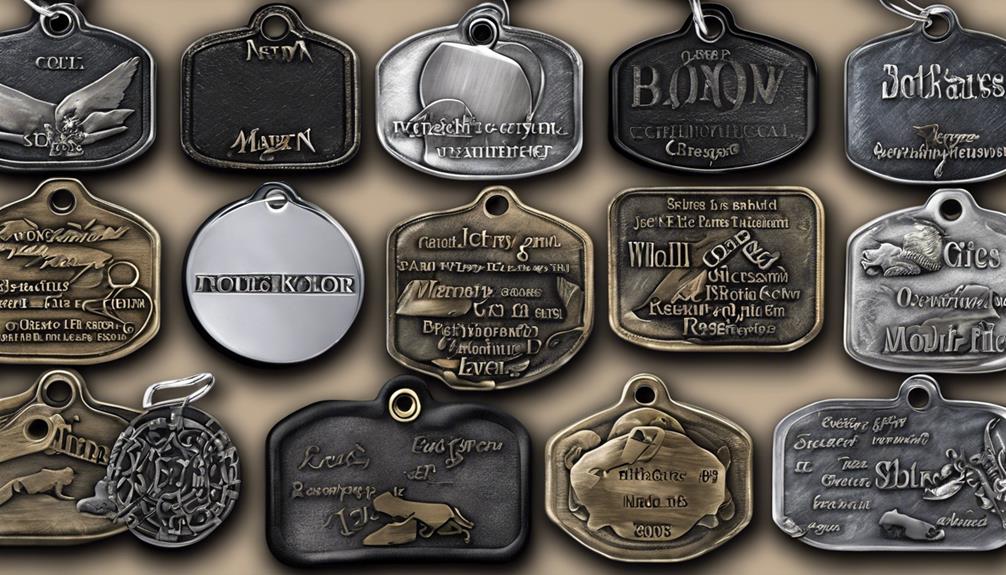DIY dog toys and games are a fun, cost-effective way to keep your pet happy and engaged. You can create toys from household items like old t-shirts, tennis balls, or plastic bottles, customizing them to your dog’s preferences. Incorporate treats and puzzles to challenge their mind and reinforce good behavior. Integrating these activities into your daily routine helps strengthen your bond and promotes healthy mental and physical activity. Keep exploring to discover more ideas that will keep your pet entertained and fulfilled.
Key Takeaways
- Create cost-effective, customizable toys using household items like t-shirts, tennis balls, and plastic bottles.
- Incorporate DIY puzzles and obstacle courses to challenge your dog’s mind and improve problem-solving skills.
- Use treats and praise during games to reinforce positive behaviors and make training enjoyable.
- Integrate fun activities into daily routines to promote mental stimulation and strengthen your bond.
- Gradually increase game complexity to match your dog’s skill level, ensuring engaging and rewarding playtime.

Creating your own dog toys and games is a fun and cost-effective way to keep your furry friend entertained and mentally stimulated. Not only do homemade toys save money, but they also give you the chance to tailor activities specifically to your dog’s preferences. When it comes to training tips, incorporating DIY games can reinforce positive behaviors and strengthen your bond. For example, using household items to create scent trails or puzzle toys can challenge your dog’s mind and improve their focus. These activities are especially useful during leash training, as they teach your dog patience and self-control in a controlled environment. You can develop simple games that reward calm behavior, making leash training less stressful and more engaging for both of you.
Create fun, homemade dog games to boost mental focus and strengthen your bond during leash training.
To start, gather common household items like old t-shirts, tennis balls, or plastic bottles. These can be transformed into durable, interactive toys that encourage your dog to use their nose and paws. For leash training, consider creating a mini obstacle course at home using these toys. Teach your dog to navigate around cushions or weave between chairs while they’re on a leash. This not only keeps them physically active but also helps them understand commands like “stay” and “heel.” Incorporating treats or praise as positive reinforcement makes the experience enjoyable and rewarding. The more you practice with homemade games, the better your dog will learn to stay calm and focused during walks.
Another effective training tip is to use interactive toys that stimulate your dog mentally while they’re on a leash. For example, hide treats inside a muffin tin and cover them with tennis balls. As your dog figures out how to remove the balls and access the treats, they’re practicing problem-solving skills. When you combine this with leash training, it helps your dog learn to remain patient and attentive even when distracted. Additionally, exploring anime movies and animated stories can provide calming entertainment for your dog during downtime, helping reduce anxiety and boredom. Incorporating DIY dog toys into your routine not only keeps your pet entertained but also enhances their ability to focus and learn new commands. Using training tools appropriately can further improve your training sessions and ensure consistent progress. These DIY activities can be easily adjusted to suit your dog’s age and skill level, gradually increasing in difficulty as they improve. Consistency is key, so incorporate these games into your daily routine to reinforce good behavior during walks.
Engaging your dog with interactive toys also encourages mental exercise, which is just as important as physical activity for a well-rounded and happy pet. The more engaged your dog is during these activities, the quicker they’ll learn commands and develop confidence. Plus, watching them explore and solve DIY puzzles will bring you joy and strengthen your bond. So, get inventive, keep it fun, and watch your furry friend thrive through these homemade games and training tips.
Frequently Asked Questions
What Safety Precautions Should I Take When Making DIY Dog Toys?
When making DIY dog toys, you should prioritize safety by using non-toxic materials to prevent any health issues. Guarantee all parts are securely fastened so your dog can’t swallow or choke on loose pieces. Avoid small objects that could be ingested and check for sharp edges. Always supervise playtime, and regularly inspect toys for wear and tear, replacing them if needed. This keeps your pet safe and happy during play.
How Often Should I Replace Homemade Dog Toys?
Like a steady heartbeat, your dog’s joy depends on toy durability and timely replacement. You should inspect homemade toys regularly, looking for wear and tear that signals it’s time for a change. Typically, replace toys every few weeks or sooner if they show damage. This ensures safety and keeps playtime exciting. Remember, consistent replacement maintains your pet’s happiness and prevents potential hazards from worn or broken toys.
Are There Specific Materials to Avoid in DIY Dog Toys?
You should avoid using non-toxic materials that could harm your dog, especially those containing harmful chemicals or dyes. Be cautious of choking hazards like small parts, strings, or loose threads that could be swallowed or cause choking. Always select safe, durable materials, and supervise your pet during play. Staying vigilant helps ensure your dog’s safety and happiness with their homemade toys.
How Can I Customize Toys for My Dog’s Size and Breed?
To customize toys for your dog’s size and breed, start with some easy customization tips. Choose durable materials suited to your dog’s chewing habits and size, guaranteeing safety. For breed-specific toys, incorporate elements that cater to their natural instincts or preferences, like squeakers for playful breeds or tug handles for strong chewers. Tailoring toys ensures they’re engaging and safe, making playtime more fun and fulfilling for your furry friend.
What Are Some Signs My Dog Doesn’T Like a Homemade Toy?
If you’re wondering whether your dog likes a homemade toy, watch for signs of disinterest like ignoring or avoiding it. You should also consider dog toy safety—if your dog shows signs of discomfort, such as excessive drooling, chewing aggressively, or trying to hide the toy, it might not be a good fit. Always supervise playtime to guarantee your pet’s safety and to catch any negative reactions early.
Conclusion
Creating your own dog toys and games is a fun, cost-effective way to keep your pet happy and engaged. Did you know that dogs with stimulating toys are 30% less likely to develop behavioral issues? By making simple DIY toys, you not only strengthen your bond but also boost your dog’s mental and physical health. So, get creative, have fun, and watch your furry friend thrive with these easy homemade games!










